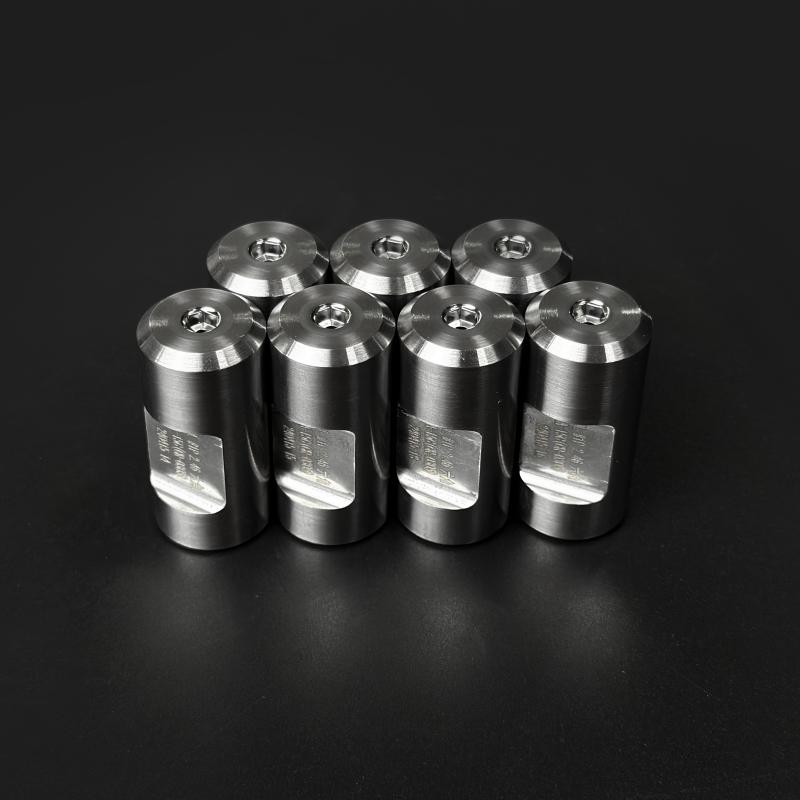Punch Dies, also referred to as punch and die sets, are fundamental tooling components used in manufacturing and metalworking for cutting, shaping, or forming sheet metal and other materials. They operate within press machines, where the punch, the male component, forcefully mates with the die, the female component, to shear or deform a workpiece placed between them. The effectiveness of a Punch Die is quantified by several critical parameters. Typical clearance between the punch and die is precisely set between 5% to 12% of the material thickness, a value crucial for achieving a clean cut and minimizing burr formation. The hardness of the tool steel used, often D2, A2, or M2, is heat-treated to a range of 58-62 HRC (Rockwell Hardness C-scale) to withstand immense shear forces that can exceed 25 tons per square inch depending on the material's tensile strength. Modern high-speed piercing punches can achieve staggering cycle rates, often operating at 800 to 1,200 strokes per minute (SPM) in progressive die applications, with tool life expectations ranging from 100,000 to over 1,000,000 cycles before regrinding is necessary, depending on the material being processed.

Key Characteristics and Technical Data
The performance of Punch Dies is defined by a set of interlinked mechanical and material properties. The primary characteristic is their exceptional hardness and wear resistance, achieved through advanced heat-treating processes like vacuum hardening and cryogenic treatment. This gives them a surface hardness typically between 60-64 HRC, allowing them to maintain a sharp cutting edge and resist abrasive wear from materials like pre-plated steel or composites. This is complemented by a tough core, often with a hardness of around 55-58 HRC, which provides the necessary ductility to absorb impact and prevent catastrophic fracture under high-tonnage loads. The precision grinding of the cutting edges is another critical feature, with tolerances regularly held within ±0.0005 inches (±0.0127 mm) to ensure perfect alignment and consistent part quality. Furthermore, specialized coatings such as TiN (Titanium Nitride), TiCN (Titanium Carbonitride), or CrN (Chromium Nitride) are routinely applied via Physical Vapor Deposition (PVD). These coatings can reduce friction by up to 50% and increase tool life by a factor of 3 to 5 times compared to uncoated tools, especially when punching abrasive or adhesive materials.
Primary Applications and Use Cases
Punch Dies are ubiquitous in industries that require high-volume, precision metal forming. The most prominent application is in progressive die stamping, where a single die set performs multiple operations—piercing, blanking, bending, and coining—in a sequential manner on a strip of metal as it feeds through a press. This is the backbone of automotive part production, creating everything from intricate bracket assemblies and electrical connectors to engine components with production rates in the millions. The automotive industry relies on massive transfer press lines equipped with punch dies to manufacture body panels, chassis components, and safety-critical parts with absolute consistency and within micron-level tolerances. Similarly, the aerospace and aviation sector utilizes high-performance dies made from premium powders like CPM 10V or custom grades to punch and form heat-resistant superalloys (e.g., Inconel, titanium) and carbon fiber composites, materials known for their extreme strength and abrasiveness. Beyond these, the electronics industry employs micro-punching dies, often with punch tips smaller than 0.1 mm in diameter, to fabricate lead frames, micro-switches, and shielding components for smartphones and computers. Even everyday items, from appliance housings and metal furniture to jewelry and packaging, are manufactured using various punch and die configurations.
Comprehensive Maintenance and Care Procedures
Proper maintenance is not merely a recommendation but a strict requirement for maximizing the service life, ensuring part quality, and guaranteeing press line safety. A rigorous and scheduled maintenance protocol must be established. The cornerstone of maintenance is regular cleaning and lubrication. After each production run or shift, the die must be thoroughly cleaned using specialized solvents and non-abrasive tools to remove metal fines, dirt, and corrosive residues. Following cleaning, all functional surfaces, including punches, die buttons, and guide components, must be coated with a high-quality, anti-rust preventive oil. For ongoing lubrication during operation, a dedicated die lubricant system should be used to reduce friction and heat buildup. Visual and dimensional inspection is equally critical. Operators must perform a visual check for signs of wear, such as microchipping on cutting edges, galling on forming surfaces, or cracks in the die block. Periodic dimensional checks using micrometers, optical comparators, or Coordinate Measuring Machines (CMM) are essential to verify that punch and die dimensions remain within original design tolerances before they produce out-of-spec parts.
When wear exceeds allowable limits, typically indicated by excessive burr on the workpiece, sharpening and regrinding are necessary. Cutting punches should be reground using a precision surface grinder, removing only the minimal amount of material—usually 0.001 to 0.003 inches (0.025 - 0.076 mm)—required to re-establish a sharp, continuous cutting edge. It is crucial to maintain the original geometry and corner radii to prevent premature failure. Proper storage and handling are the final pillars of maintenance. Dies should be stored in a controlled, dry environment to prevent rust. They must be placed on sturdy, stable racks or stands, never directly on the floor. When not in use, the entire tool should be protected with a rust-inhibitive coating. During handling and installation, correct procedures and lifting equipment must be used to avoid dropping or impacting the tool, which can cause misalignment or damage to critical, precision-ground components.











